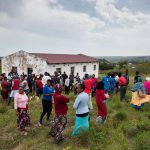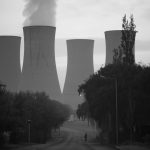Australia’s bushfires are a sign of the future
The fires that have raged across the globe in the past year, most recently down under, represent the stark reality of capitalism’s refusal to deal with the climate crisis.
Author:
5 March 2020

Fire has always posed a threat to humanity. But for the most part, societies have adapted to manage fire hazards and recover from disasters. And fire, when controlled, is a huge benefit. Along with language, the discovery of fire was a key factor in human evolution, allowing our ancestors to cook food, create settlements and spread throughout harsh climates. It remains a central facet of human civilisation, essential to agriculture, nutrition and energy production.
But climate breakdown is drastically altering our relationship to fire. Rising temperatures, caused by capitalism’s voracious burning of fossil fuels, and ecosystem destruction make the conditions ripe for fires to be more frequent and destructive.
Fire defined 2019, a year of smoke and ash across the world. Howling vortexes of wind, soot and flame raged across California, Spain, the Amazon and Central Africa. Most ominously, fires in Greenland and the Arctic evidenced how radically fast the planet is heating up. As historian Stephen Pyne says, climate change may be fuelling the Pyrocene, a proposed age of unprecedented fire disaster.
But most harrowing has been Australia’s fire season, with its apocalyptic scenes of an entire continent on fire. Global warming is lengthening Australia’s existing fire season and fuelling the heatwaves and droughts that serve as a powder keg.
Related article:
The result is the unparalleled destruction of the past few months. The world watched as scorching flames tore through Australia, decimating homes, infrastructure and the country’s distinctive wildlife. Dead towns, dead koalas and cities like Sydney, Melbourne and Canberra shrouded in smoke in the middle of the day. Smartphones captured images of desperate residents fleeing to beaches, the sky an infernal red hellscape behind them.
These bushfires were so large that they generated their own weather with pyrocumulonimbus clouds. Described by space agency Nasa as “fire-breathing dragons”, these freak clouds fuel more fires and are becoming disturbingly common through climate change. As with the Amazon fires, the Australian blazes will have a global impact by dumping vast amounts of CO₂ into the atmosphere, creating the conditions for further disasters elsewhere.
And the fire season is still not over. Recent heavy rainfall, itself made more destructive by climate change, has provided a temporary respite. But along with the human and social devastation caused by the current disasters, Australians must now reckon with a brutal new climate normal, where the country will find itself constantly assailed by drought, fire and flood.
Lords of the ashes
Australia has always been a continent of extreme weather. However, humans have historically found ways to work with these conditions. As Australian historian Bill Gammage has demonstrated, Aboriginal people used a sophisticated system of controlled burning that resulted in lush, parkland-like spaces. They used fire to ensure biodiversity while simultaneously meeting human needs. But many of these land management techniques were lost in the genocidal British colonisation of the continent.
While contemporary Australia has an impressive emergency system to respond to bushfires, global warming and the new age of firestorms threaten to overwhelm the state’s capacity to fight blazes. And the Pyrocene is not a natural process to which humans can merely adapt by putting the right systems in place. As with all aspects of the global ecological crisis, it is rooted in dirty politics, power and greed.
Australia’s ruling class is thoroughly wedded to the extractive fossil fuel industries driving climate chaos. The country is the world’s third-largest exporter of fossil fuels and the largest exporter of coal. Its dominant corporations are involved in mining or fossil fuels and have a global imprint, including extensive operations in South Africa.
Related article:
The ruling right-wing Liberal Party denies the urgency of addressing the climate emergency. Prime Minister Scott Morrison once offered a paean to fossil fuels while lovingly stroking a lump of coal in Parliament. During this current crisis, he decided to take a nice family trip to Hawaii. The emperor Nero is said to have fiddled as Rome burned, likewise Morrison took a selfie on a beach while his country was on fire.
Along with climate change denial, the Liberal Party has used draconian laws to restrict environmental protests. Morrison uses right-wing cultural war rhetoric to claim that “quiet” Australians love coal and are not concerned about rising temperatures. The government has also gone out of its way to undermine and thwart global efforts to reduce carbon emissions.
However, the Australian Labor Party is also complicit. While acknowledging the severity of climate change on the one hand, it continues to support the expansion of mining and fossil fuels and their export to other countries on the other. Australia’s elites push irresponsible projects such as the wildly dangerous Adani coal mine in Queensland, which may be the death knell for the Great Barrier Reef, one of the world’s greatest natural wonders.
As with its counterparts throughout the world, Australia’s political establishment is faced with a choice between short-term profit and long-term survivability. As the satirical Australian collective Juice Media observes, in the wake of the current fires the state has been forced to acknowledge that the climate crisis is real – while doing nothing seriously to mitigate the economic factors that fuel it. As one climate protester in Melbourne put it last year: “They don’t care if people burn. They don’t care if the planet burns. They care only about their power. They will be the lords of the ashes.”
Lessons for South Africa
The Australian crisis represents the stark reality that ordinary people are facing as the climate crisis gathers pace. Our current political and economic system, and our rulers – elected or otherwise – are not prepared to take the radical steps needed to decarbonise economies. As unions and climate activists are increasingly realising, scientific evidence and reasonable pleading do not work. Only sustained, militant pressure from below can force the transformative structural reforms needed to facilitate a just transition to renewable energy, before civilisation is pushed off a climate cliff from which it may not recover.
Ten thousand kilometers across the Indian Ocean, Australia’s situation has a profound relevance for South Africa’s future. Australian mining capital is deeply implicated in environmental damage in our country. Most infamously, Australia-based firm Mineral Commodities has, with the support of the South African government, attempted to force titanium mining in dunes on the majestic Wild Coast in the Eastern Cape despite sustained protest from residents. As the Amadiba Crisis Committee has alleged, the company and our own government have resorted to violent repression to get their mines built.
Related article:
As with Australia, our ruling elites cannot quit their addiction to coal. Despite the climate crisis – and Eskom’s electricity-generation crisis – the state is digging in its heels with fossil fuels and dragging its feet on the conversion to renewable energy.
In photojournalist Daylin Paul’s harrowing book Broken Land, in places like Mpumalanga, our filthy coal plants are leaving in their wake a wasteland as cracked and grim as the aftermath of the Australian fires.
Related article:
In the smouldering embers of Australia’s fires, we can see the stark and existential choice faced by all societies today. There is the path of mitigating and adapting to climate change through political and economic interventions that ensure human wellbeing and flourishing within ecological limits. The other is the road of inaction and denial, which will only lead to despoliation, loss and death on a scale we have yet to see.




